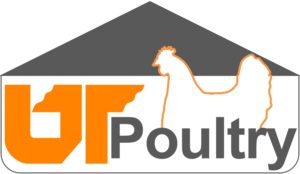Dr. Elizabeth Eckelkamp
Dr. Lew Strickland
Dr. Tom Tabler
As of Friday March 29, USDA’s Animal and Plant Health Inspection Service (APHIS) had confirmed the detection of highly pathogenic avian influenza (HPAI) in dairy herds in Texas, Kansas, Michigan, Idaho, and New Mexico. State officials in Michigan and Idaho have stated that the affected dairies in their states had received the dairy cows from farms in Texas. The situation continues to evolve and USDA, along with state and federal partners, are sharing information as it becomes available. Wild migratory birds are believed to be the initial source of the infection. However, the spread of the disease among the Michigan herd also indicates that HPAI transmission between cattle cannot be ruled out. Tests so far indicate that the HPAI detected in dairy cattle is the same H5N1, Eurasian lineage goose/Guangdong clade 2.3.4.4b strain that has been affecting wild birds and commercial and backyard poultry flocks in the U.S. since early 2022. Initial testing has not found changes to the virus that would make it more transmissible to humans. However, a confirmed case of HPAI in a human was announced on April 1. This person had exposure to Texas dairy cattle presumed to be infected with H5N1. This does not change the Center for Disease Control’s (CDC) human health risk assessment for the US general population, which is considered to be low.
Many species are susceptible to influenza viruses. Producers are encouraged to work with their veterinarians to report cases of sick cattle to State Animal Health Officials. Deceased pigeons, blackbirds, and grackles have been found on the affected dairy farms in Texas which may have been the initial source of the cattle infections. USDA is encouraging producers and veterinarians to minimize dairy cattle movement. It is expected that minimizing movement, upholding good biosecurity practices, and testing animals before movements will limit disease spread sufficiently to avoid the need for regulatory restrictions and quarantines. Among the dairies whose herds have been exhibiting symptoms, the affected animals have recovered with little to no associated mortality. USDA does not anticipate the need to depopulate dairy herds. Affected cows on dairy farms are being isolated from other animals. Recent detections of HPAI in poultry have slowed in recent months with January-March detections in 2023 and 2024 considerably less than the January-March 2022 detections, indicating that biosecurity practices and virus management have played a significant role in reducing impacts to commercial and backyard poultry flocks.
The milk supply remains safe. The Food and Drug Administration (FDA) does not currently have concerns about the safety and availability of pasteurized milk products nationwide. Because milk products are pasteurized before entering the market, there is no concern about the safety of the commercial milk supply. In the event that the virus is present in milk, pasteurization has continuously been proven to inactivate bacteria and viruses. Regarding raw milk, the FDA’s longstanding position is that unpasteurized, raw milk can harbor dangerous microorganisms that can pose serious health risks to consumers, and FDA is reminding consumers of the risks associated with raw milk consumption in light of the HPAI detections. USDA is confident in the safety of the meat supply. As always, consumers are encouraged to properly handle raw meats and to cook to a safe internal temperature. Cooking to a safe internal temperature kills bacteria and viruses, like influenza, in meat.
Cattle owners are highly encouraged to follow recommended biosecurity practices to reduce or eliminate livestock and avian interaction including:
- Minimize or eliminate (when possible) poultry and livestock species access to open water (ponds, wetlands, and other water sources) frequented by wild waterfowl.
- Monitor livestock for signs of illness (decreased milk production and feed intake, fever, change in feces, etc.).
- Monitor barn cats, wild waterfowl, and other wildlife often found around livestock operations for illness or unexplained deaths.
- House poultry separately from other livestock and minimize poultry access to pastures where other livestock graze.
- Minimize or eliminate poultry, waterfowl, and wildlife access to shared water sources and feed resources.
- If your herd shows symptoms of infection, consult your veterinarian or the TN State Veterinarian’s Office immediately.
Although there have been no reported detections of HPAI in cattle in Tennessee, TDA’s Animal Health Division is monitoring the information around this outbreak. The State Veterinarian is meeting with USDA and other state officials to stay abreast of any developments in the understanding of the pathology and risks associated with this outbreak. Veterinarians in Tennessee who suspect any illness related to this issue are requested to contact the State Veterinarian’s office to report, and for guidance collecting diagnostic samples. All livestock and backyard poultry producers are encouraged to practice strong biosecurity and notify your local veterinarian or the Tennessee State Veterinarian’s Office if you suspect disease in your herds or flocks. Commercial poultry producers should contact their field service technician at the first sign of disease in their flocks.
